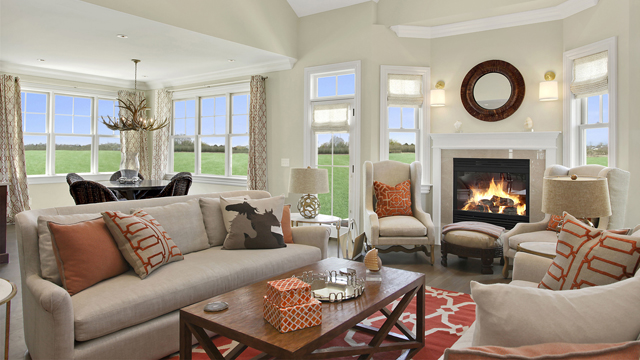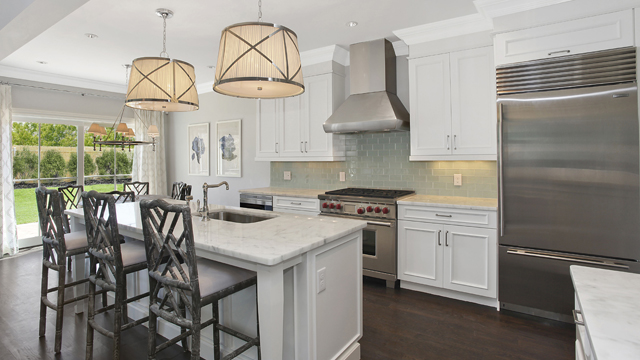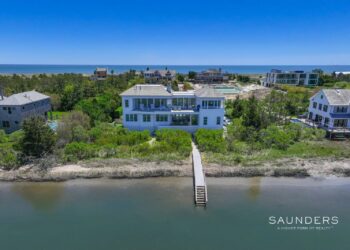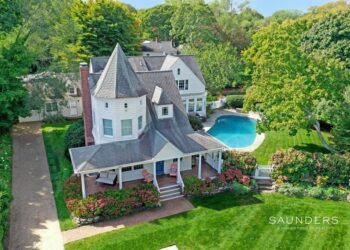In my previous two articles, I discussed the technical differences between residential cooperatives and condominiums, and the opinions of Hamptons realtors regarding their marketability. For this article, I looked to the condominium development Bishops Pond in Southampton Village. What I found particularly intriguing was the size of the venture (72 units over 113 acres), its location (previously a 20 foot hole in the ground gravel pit abutting railroad tracks), and its commencement date (2011, when the recovery of the real estate market was still in question). For the facts, I interviewed Steven Dubb, whose firm the Beechwood Organization took on this challenge, and Mary Slattery, an Associate Broker with the Corcoran Group who “partnered” with Beechwood to market the units.
I started the conversation by finding out from Steven how many of the 79 units had been sold and are occupied as of the date of the interview. “We have sold 73 units between the original site and an additional ten in what we call the Enclave,” he shared. “67 are already occupied.” I thought that was an impressive number, especially when he answered my question regarding final certificates of occupancy regarding the units. It is not uncommon for the developer to occupy based on temporary certificates of occupancy, which means there are still items outstanding before the building department will issue final certificates of occupancy. “We have final C.O.s for all of our units,” noted Steven. I was also very impressed with a statistic Mary shared. “We started our sales in March 2013, out of a storefront on Job’s Lane, and between Memorial Day and Labor Day, we sold 52 units,” noted Mary. “In the summer of 2014, the first ten weeks, we saw a buying frenzy.”
 |
|
A Bishops Pond living room option. (Courtesy Photo) |
What are the sizes of the units and what were the prices, I asked? “We started at $750,000 to $1.6 million and the sizes are three to five bedrooms,” Steve responded. “We raised prices six or seven times and now we are at $1.9 to $2.5 million.” I then asked Steve, who is buying these units? They don’t meet the profile of the typical condominium buyer who is looking to downsize. “No,” he agreed. “These are people typically over fifty years of age, cash buyers who have sold homes on the North Shore of Long Island, Northern New Jersey, and Southampton for $10 million and are looking to “downsize” their maintenance responsibilities, not their living space. We will finish off the basement if they so desire and all of the units have a garage.” Slattery added, “They like the idea that here you can get a basement, garage, and a first floor bedroom, all included in the unit. That’s not typical with condominiums. Just to give you an idea of our buyers, we have seven year round residents. It is not uncommon for them to have a home in New York City, Palm Beach, as well as the Hamptons. They are people who want to travel and not be tied to a home with common charges of approximately $650 a month.”
That brought me to the question of investor units. A concern among purchasers of condominium buyers is the fact that it they attract investors rather than those who wish to make it a home. I asked Steven how he addressed this issue. “We were very sensitive to that issue and one of the steps we took was to require that the purchaser not resell the unit less than a year from taking ownership,” noted Steven. “We also have restricted rental to no fewer than 30 days and no more than three times a year. I don’t think that we have any more than 10 percent or 15 percent investor units.”
 |
|
A seating area at the Clubhouse of Bishops Pond. (Courtesy Photo) |
Normally, a developer will do a market analysis of what comparable homes in the area are selling for before deciding to proceed with incurring the up-front costs related to development. I asked Steven, given the fact there weren’t any comparable developments, (Watchcase in Sag Harbor wasn’t completed yet), what made you confident that you could make a project of this scale work? His answer, “You’re right, there weren’t any large scale condominium developments that we could use in the Hamptons homes, but we did build condominiums all over Long Island and we did feel that we knew the value of condominiums. We felt comfortable making a bet that there were people who wanted the opportunity for the carefree luxury living that condominiums could provide in the Hamptons. We took a leap of faith.” Considering the risk, did you get the return that justified the risk, I asked? “Yes, it’s been a good experience,” he said. “A lot of my real estate friends who knew the Hamptons didn’t think we would succeed.” But it wasn’t just a leap of faith, I assume you did your market research, I offered. “Yes. Mary [Slattery] and I monitored the market for years before we took the plunge.” Mary added, “I have never seen the market so carefully watched as has been my experience with Beechwood.”
I then asked the question that I asked of other brokers in my first article. Do you think the rate of appreciation for condominium resale is competitive with the historical single family home, given the fact that we don’t have a history of these sales? Steven’s answer, “I think that what is selling for $2.5 million today will be selling for $3.5 in a couple of years. Also, there are not many pieces of property that can be zoned for condominiums, so as the lifestyle choices for condominium living increases, so will the rate of appreciation for existing units.”
 |
|
Between Memorial Day and Labor Day of 2013, 52 units were sold. (Courtesy Photo) |
My next issue had to do with the subject of affordable housing. The state requires a developer of a major subdivision to set aside a certain number of units for affordable housing or make a contribution to a fund for the development of affordable housing. I inquired how this impacted Beachwood. Steven noted, “We had started our project before this became a requirement, but we voluntarily did make a contribution to the Town and Village of Southampton for this purpose.”
Mary Slattery, whose real estate experience in the Hamptons provides special insight from the human factor buyer perspective said the following, “The disadvantages of the sight – a 20 foot gravel pit, the railroad tracks, a dirty blight on the community – ironically worked in favor of the development. People were so glad to see what was going to be developed that they cheered us on. We weren’t taking away farm land.”












